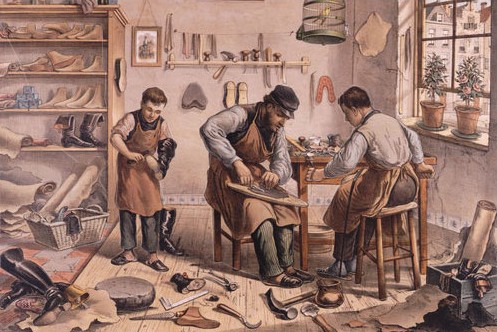
Note: the following information about apprenticeships in Scotland describes what was in place in the 16th and 17th centuries in the larger burghs. The apprenticeships that William Wighton (Generation 3, mason) and John Wighton (Generation 4, shoemaker) experienced were likely similar in nature, although it must be noted that their apprenticeships were a century later. Also, they apprenticed in small villages which, again, would lead to a somewhat different experience.
In the 16th and 17th centuries, a system of guilds became established in Scotland to govern membership in merchant and craft occupations. Anyone wishing to enter a guild had to pay a fee, work under a master for a certain number of years, and prove mastery of the trade at the end of the apprenticeship. Only members who had been properly apprenticed and who had passed the mastery test were allowed to practice their craft in a burgh.
There were three levels within a craft. The Master Craftsman owned his own tools and workshops and sold products to the public. Journeymen worked for the master craftsman for wages, hoping someday to be masters themselves. Apprentices lived with and worked for master craftsmen in order to learn the trade. Those three levels are depicted in the image above.
Thomas and John, for example, would probably have entered their apprenticeship in their early teens. They would have served under their master's strict supervision for 5-7 years. For example, if they missed a day of work without approval, their term could be extended two days for each day missed. As another example, an apprentice who was found to have committed grievous sins (e.g., fornication, adultery) could have his apprenticeship extended for two years. In return for the service, the master gave the apprentice room and board for the duration of his apprenticeship and taught him the craft. (In longer apprenticeships, the master might provide room and board for the first 5 years, and then provide food along with a small wage for the next 2 years.)
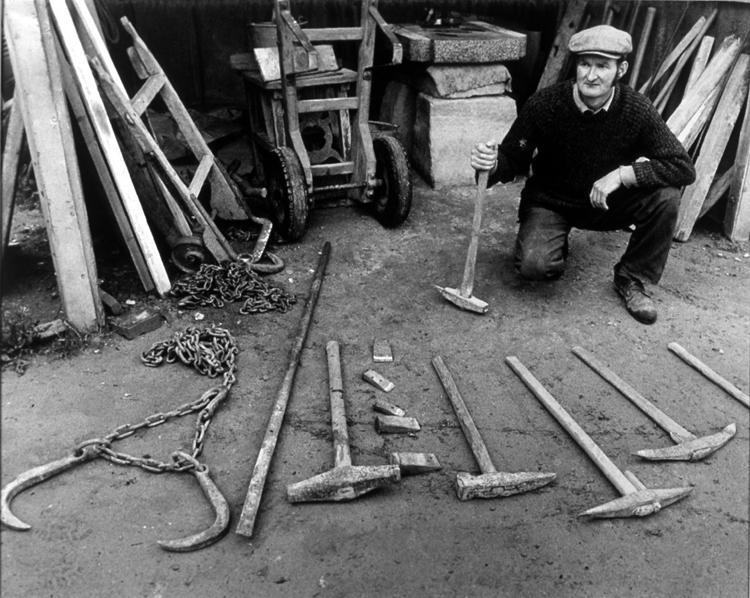
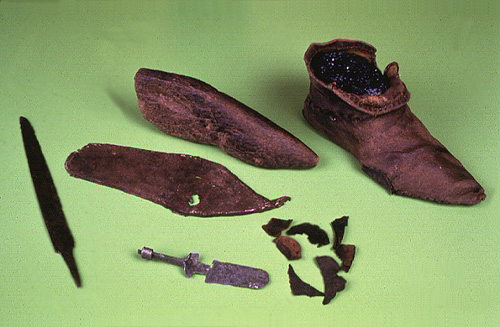
Above left, a mason's modern tools; above right, a 19th century shoemaker's tools.
Essentially, the primary function of the craft guild was to uphold the rights of its members from intrusion by outsiders, for example from craftsmen outside the burgh. One of the primary functions of the guild was to warn people in the burgh of the harm that could be done if they hired unqualified craftsmen; they further sought out dishonest workers and stopped merchants and others from employing them. Although this was dressed up as being in the interests of consumers and in order to ensure high quality workmanship, in practice the system worked mainly in favour of the craftsmen by eliminating lower-priced competitors from flooding their markets. The high entrance fee and the regulation that a master could not have more than one apprentice at a time meant that recruitment to the guild was limited and this kept the demand for their services high.
Entry into a guild by an outsider was difficult because of the entry fee and the long commitment of time before he could work. However, a son of a guild member could enter the trade by paying a smaller fee. He would also serve a shorter apprenticeship before being able to ply his trade. Sons-in-law of a guild member received the same preferential treatment. Thus, the preferred route for an outsider wanting to enter a guild was to marry the daughter of a member. He would get an easy entry, a little capital in the form of a dowry, and the respectability of belonging to a guild. From the father's perspective, the guild's preferential treatment for a son-in-law gave him an easier way to marry off a daughter and some guarantee that he would be taken care of in his old age by a well-established guild family.
Craftsmen did not die rich nor did they enjoy the standard of comfort enjoyed by merchants. The main benefit of belonging to a guild was not necessarily the opportunity for wealth, but was instead the defence it gave against the perils of pauperism. Every guild collected regularly for the families of poor, distressed members. In addition, every guild hired out a mort cloth under which members would be given a respectable burial. (Fees from the mort cloth rental went towards distressed members.) Thus, membership in a guild was somewhat defensive in nature - to keep competitors out and to keep destitution from the door.
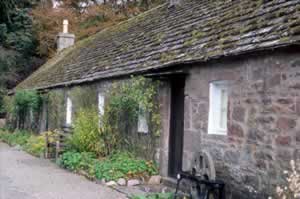
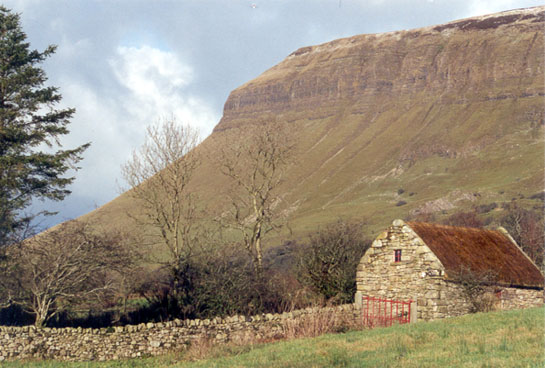
Above left, a row of stone houses in Glamis from the early 1800s; note the slate roofs. Above right, a stone house and wall.
It's difficult to know the exact situation of craftmen in the smaller villages - for example, how stringently the rules were applied about competition, length of service, etc. I do know from my readings that in the 16th and 17th centuries, working in a craft would have been secondary in nature; livelihood was primarily gained by working the soil because all villagers would be scratching just to grow enough food to live.
However, as the agricultural revolution began its course, more wealth accumulated in the villages. Farmers grew more food than they needed to feed their families and to pay their rent; that food could be sold locally or transported to Dundee. Also, with the industrial revolution, women and daughters had a market where they could sell their spinning and weaving. Previously, all those efforts went just towards clothing their family. As the cities became a market where villagers could sell their produce, linens, and other craft products, wealth began to accumulate. Villagers could afford to live in better houses and a transition from the one room cottar to a better built house began. In the valley of the Strathmore where wood was at a premium, other building supplies (e.g., stone) were used. However, I suspect that ties to the land were never cut completely in the villages during this period. Families of craftsmen, teachers, ministers, etc. still relied on the family's own slice of land for its own food. That would have been the responsibility of the wife and children.
Sources
Smout, T.C. (1998). A History of the Scottish People, London: Fontana Press.